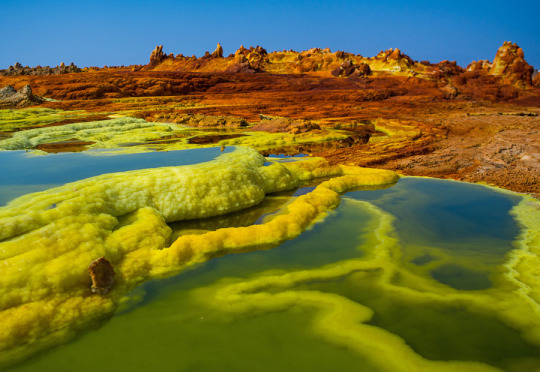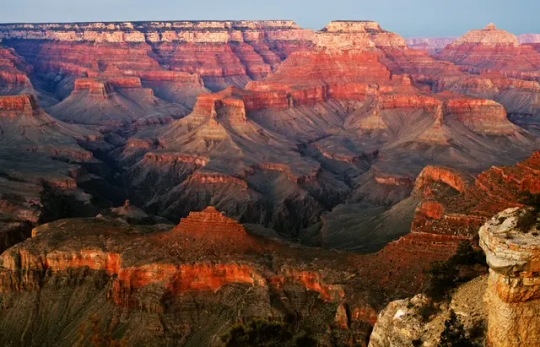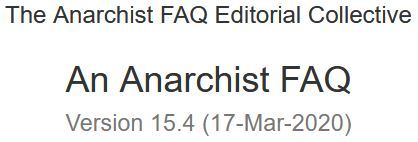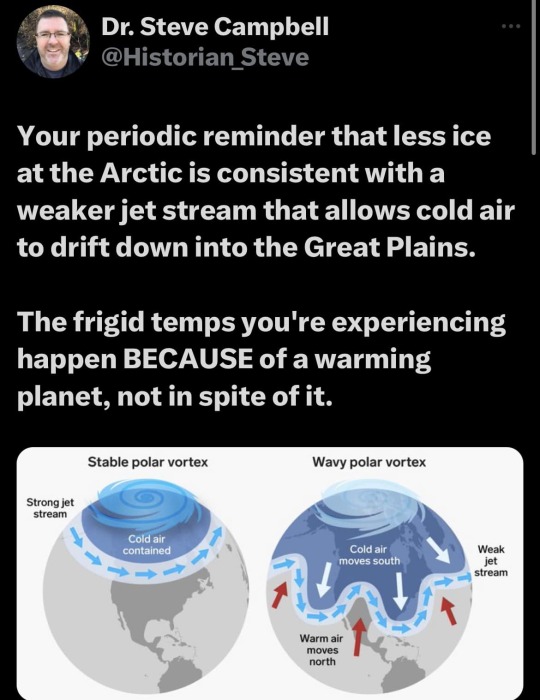#climate change
Text
Since the 1960s, the world has seen a spike in the number of natural disasters, largely due to rising sea levels and an ever gradually increasing global surface temperature.
The good news? We’re getting better at helping each other when disasters strike.
According to a recent study from Our World In Data, the global toll from natural disasters has dramatically dropped in the last century.
“Low-frequency, high-impact events such as earthquakes and tsunamis are not preventable, but such high losses of human life are,” wrote lead authors Hannah Ritchie and Pablo Rosado.
To conduct their research, Ritchie and Rosado gathered data from all geophysical, meteorological, and climate-related disasters since 1900. That includes earthquakes, volcanic activity, landslides, drought, wildfires, severe storms, and mass floods.
In the early-to-mid 20th century, the average annual death toll from disasters was very high, often climbing to over a million.
For example, the study cites that in 1931, 2.7 million people died from the Yangtze–Huai River floods. In 1943, 1.9 million died from the Bangladeshi famine of 1943. Even low-frequency events had extreme death tolls.
“In recent decades we have seen a substantial decline in deaths,” Ritchie and Rosado observed. “Even in peak years with high-impact events, the death toll has not exceeded 500,000 since the mid-1960s.”
Why has the global death toll from disasters dropped?
There are a number of factors at play in the improvement of disaster aid, but the leading component is that human beings are getting better at predicting and preparing for natural disasters.
“We know from historical data that the world has seen a significant reduction in disaster deaths through earlier prediction, more resilient infrastructure, emergency preparedness, and response systems,” Ritchie and Rosado explained in their study.
On April 6, [2024],a 7.2 magnitude earthquake rocked the city of Hualien in Taiwan. Days later, as search and rescue continues, the death toll currently rests at 16.
Experts have praised Taiwan for their speedy response and recovery, and attributed the low death toll to the measures that Taiwan implemented after an earthquake of similar strength hit the city 25 years earlier. Sadly, on that day in 1999, 2,400 people died and 11,000 were injured.
In an interview with Al Jazeera, Wang Yu — assistant professor at National Taiwan University — said that event, known as the Chi-Chi earthquake, revolutionized the way Taiwan approached natural disasters.
“There were lots of lessons we learned, including the improvement of building codes, understanding earthquake warning signs, the development and implementation of earthquake early warning (EEW) systems and earthquake education,” said Wang.
Those same sensors and monitoring systems allowed authorities to create “shakemaps” during Hualien’s latest earthquake, which helped them direct rescue teams to the regions that were hit the hardest.
This, in conjunction with stronger building codes, regular earthquake drills, and public education campaigns, played a huge role in reducing the number of deaths from the event.
And Taiwan’s safeguards on April 6 are just one example of recent measures against disasters. Similar models in strengthening prediction, preparedness, and recovery time have been employed around the world when it comes to rescuing victims of floods, wildfires, tornados, and so on.
What else can we learn from this study?
When concluding the findings from their study, Ritchie and Rosado emphasized the importance of increasing safety measures for everyone.
Currently, there is still a divide between populations with high gross national income and populations living in extreme poverty.
Even low-income countries that infrequently have natural disasters have a much higher death rate because they are vulnerable to collapse, displacement, and disrepair.
“Those at low incomes are often the most vulnerable to disaster events; improving living standards, infrastructure, and response systems in these regions will be key to preventing deaths from natural disasters in the coming decades,” surmised Ritchie and Rosado.
“Overall development, poverty alleviation, and knowledge-sharing of how to increase resilience to natural disasters will therefore be key to reducing the toll of disasters in the decades to come."
-via GoodGoodGood, April 11, 2024
#good news#hope#climate change#hope posting#climate news#climate crisis#climate anxiety#climate emergency#natural disasters#disasters#earthquake#wildfire#hurricane#cw death#taiwan#tsunamis#building construction#climate action#climate hope
364 notes
·
View notes
Text

#never trump#republican assholes#climate change#ecology#environment#green jobs#sustainability#corporate greed#maga morons#climate crisis#climate activism#climate deniers
279 notes
·
View notes
Text
By studying calcifying organisms, Leanne aims to better understand the impacts of human activity on marine ecosystems. Through her research, she hopes to influence policy that helps protect marine calcifiers in the future.
“Why is this important? The idea is that the more porous the shell, the weaker it is. Mussels need strong, robust shells to protect their inner soft organs—and that strong 3D structure is important for ecosystem function as habitat formers and storm defenses.
Currently, the changes seen in shell porosity are not large enough to influence the material properties, so we aren’t seeing weaker shells just yet. But with further warming in our oceans being predicted, this could potentially lead to even more porous shells, potentially impacting mussels’ function as habitat formers and storm defenses, as well as their ability to protect themselves from predation,” Melbourne explains.
Learn more about her research here.
#science#museum#amnh#natural history#nature#marine biology#marine ecosystem#mussels#bivalve#did you know#fact of the day#research#women in stem#climate change#conservation#earth month#earth day
214 notes
·
View notes
Text
The World is Amazing, Actually (Part 11 or 12, I lost count)
It's been awhile since I made a post about how fucking rad the world actually is, and amidst all the pandemics and climate change and economic troubles, I felt the need.
So:
Today’s Wild Place (The Earth is An Alien Planet):
The Danakil Depression, Ethiopia:

The Danakil Depression is probably the closest you'll ever be able to come to standing on the surface of Venus (without the crushing atmosphere, of course). Choking sulphuric acid and chlorine gases fill the air, while acid ponds and geysers pepper the landscape.
- Daisy Dobrijevic, published July 4, 2022
(BTW scientists recently discovered microbes capable of surviving in this toxic, extremely hot environment, which means...well, even if we kick the bucket, life will continue. There's something comforting in knowing that no matter how bad we screw up...life will go on.)
Today’s Incredible Feat of Engineering (look! at what! we made!):
Ouarzazate Solar Power Station in Morocco, which has gone solar in a big way.


(Which means they are making a huge contribution to helping fight toxic pollution, noise pollution, water use, land destruction, and carbon emissions. No really, there are charts. Reducing carbon emissions charts. Reducing irresponsible land use charts. Charts! Graphs! Data samples!)
Today’s Cool Life Form (the rare, the weird, the beautiful):
The Hispaniolan Solenodon.

A very rare, nocturnal, shrew-like creature that is one of the few mammals able to produce venom. Look at him! Look at his snout! He's just a little guy! He will bite you and run away on his back legs! He's rare, and endangered, but not gone! Not gone yet, bitches!

(Bonus: 10 Fun Facts About the Solenodon)
Today’s Bizarre Mystery (no, seriously, wtf?):
The Great Unconformity.
Hey, remember the Grand Canyon? Remember how we can see the passage of time through each layer, going back hundreds of thousands of years?

Did you know that apparently, on this massive record of earth's geological history, there's a chunk of time missing? Science has some hypotheses about how and why this happens (and yes, it's been found in more than one place), but they are really only hypotheses, and no one's really sure what happened to, oh, 1.6 billion years, give or take.
Today’s Act of Humanity (yes, we are worth the effort):
After fleeing a war, Ukrainians rush to help Mississippi tornado victims.

"They made the 16-hour drive south to donate bottled water and volunteer with aid workers, buoyed by the idea that they could help a community facing a similar struggle to theirs.
“We had to leave our home,” Pavliuk told The Washington Post in Ukrainian, in an interview interpreted by Hrebenyk. “And they don’t have a place to go back, either.”"
NEW CATEGORY:
Today's Good News About The Future (No, It's Not Too Late and Anyone Who Says Otherwise is Selling Something):

The Saiga Antelope, a species critical to the continued survival of huge swathes of grassland, that in 2003 was down to 6% of it's population and already extinct in it's natural habitat of China and Ukraine, has rebounded back to almost 2 million strong thanks to conservation efforts.

Previous | Next
#the world is amazing#planet earth#nature#good news#animals#danakil depression#Ouarzazate Solar Power Station#morocco#Hispaniolan Solenodon#little creature#saiga antelope#climate change#climate conservation#hope#ukraine immigrants#people are okay#mississippi tornado#look for the helpers#I'm so tired of being worried about the world#but it's not all bad
135 notes
·
View notes
Text
Costa Rica generates around 99 percent of its electricity from renewable sources. How was the country able to accomplish that?
Kenneth Lobo Méndez: The secret of this achievement is mainly planning.
Identify the capacity of the different energy sources so you can get the big picture about how different resources can work together to get a renewable system. In the winter, like a six-month period from June to December, many of the hydropower plants get surplus flows. That’s when we have low wind, but we have more hydropower. And then in the summer, like from December to May perhaps, we get low hydropower, so the other sources of energy complement that electricity supply — mainly wind power, biomass, and geothermal.
[...]
In the US, we’re used to many smaller private electric utilities. Does having a national energy company like ICE make it easier to adopt renewable energy?
KLB: In our perspective, yes, it’s an advantage that the planning is held by a government state company. It can make a plan for the country according to the government’s vision. We only sell what we need, and there’s no interference from different stakeholders. It makes the planning process more simple.
139 notes
·
View notes
Text
Things Biden and the Democrats did, this week #15
April 19-26 2024
President Biden appeared along side Congresswoman Alexandria Ocasio-Cortez and Senators Ed Markey and Bernie Sanders to announce major climate action. Biden announced a program, Solar For All, 7 billion dollars aimed at supporting low income house holds install solar power in their homes. The program will support 900,000 households across the country getting solar. Lower the average energy bill for a family by $400 a month and avoid more than 30 million metric tons of carbon pollution over the next 25 years. The boost in solar installation will help create 200,000 new jobs across the country. The President also announced the launch of the Climate Conservation Crops. modeled on FDR's Civilian Civilian Conservation Corps and JFK's Peace Corps, Biden's Climate Conservation Crops will be a program where young people can connect with climate projects across the country and be paid to help protect the planet. The Corps will be 20,000 strong, with 2,000 openings listed right now on their webpage across 36 states DC and Puerto Rico.
The Department of Labor finalized a new rule on overtime. Currently employers are only required to pay overtime to workers making under $35,568. Under the new ruling that will be raised to workers making $43,888, and in January 2025 raised again to workers making $58,656 and under. This will bring overtime pay to 4 million more workers and transfer $1.5 billion from the pockets of companies to workers. It also fixes to raise the level with inflation every 3 years starting in 2027.
The EPA announced a $1 billion dollar program to help replace heavily duty vehicles with clean energy versions. There are currently 3 million class 6 and 7 vehicles, school buses, box trucks dump trucks, street sweepers, delivery trucks, bucket trucks, and utility trucks, in use. 70% of the funds will go to replacing School Buses with Clean energy buses and the remaining 30% will go to replacing Vocational Vehicles like dump trucks and street sweepers. Heavy Duty vehicles on top of green house cases release harmful nitrogen oxide and fine particulate matter and replacing them will not only combat climate change but improve public health.
The Department of Interior took actions to protect 13 million acres of Alaska wild land is protected and to secure the livelihood of Alaska Native peoples who rely on this land. The Administration refused oil and mining rights on the vast areas of Alaska land as well as a 210 miles road through the northern wildernesses. This area represents valuable habitat for caribou and endangered polar bears, as well as millions of migrating birds.
The Department of Transportation announced finalized rules requiring airlines to give automatic cash refunds for canceled flights and other inconvenience. The refunds will be automatic meaning passengers will not have apply for them, prompt the airlines are required to refund a credit card purchase in 7 days, and require repayment in full and in kind, airlines can not substitute travel vouchers for cash. The DOT also announced new rules to protect airline travelers from junk fees, airlines and ticket agents must now clearly tell travelers upfront about all fees so no one is surprised by a hidden fee.
The EPA announced finalized rules on emissions standards for fuel burning power plants. The new rules include a tightening of Mercury and Air Toxics Standards, requiring a 70% reduction in mercury. It also had rules protecting ground water, new rules will require coal powered plants to remove 660 million pounds per year of pollutants discharged through wastewater, and for the first time federally regulates the dumping of coal ash, requiring safe dump sites that will not leak into ground water. Finalized rules require coal fired and new natural gas-fired power plants to capture up to 90% of their carbon pollution
Security of Transportation Pete Buttigieg attended the ground breaking of a new high speed rail project to connect Los Angeles and Las Vegas. The Biden Administration announced 3 billion to support the project 5 months ago. At 218 of all electric green rail the project promises to be the fastest way to get from LA to Las Vegas. Planned to open in 2028 just in time for the LA Olympics it is the first of many planned high speed rail projects. The Biden Administration has promised $66 billion for high speed rail and the largest single investment in Amtrak ever.
The FCC announced a new rule restoring Net Neutrality. Net Neutrality requires internet service pervaders to treat all websites equally and not slow certain ones now or speed others. In 2015 under Obama the FCC passed a rule requiring Net Neutrality. However in 2017, the FCC spread headed by Trump appointed Chair Ajit Pai repealed the rules. A patchwork of Democratic controlled states, lead by California passed state level laws requiring Net Neutrality forcing ISPs to de facto keep it in place. Late last year President Biden got the opportunity to replace Pai on the FCC, giving the FCC a 3 to 2 Democratic majority which voted this week to return to the Obama era rules and protect Net Neutrality nationwide.
The FTC passed finalized regulations to ban noncompete agreements in nearly all cases. These agreements, which cover 18% of American workers, about 30 million people, prohibit workers from joining or creating competing companies for a certain period of time. The FTC estimates that workers will earn an average of $524 dollars a year more and up to 8,500 new businesses will be created each year. The new rule will still allow noncompete for senior executives who make up less than 1% of the work force. Like with the FCC, two out of the 3 FTC commissioners who voted for the new rules are Biden appointees.
The Departments of Health and Human Services and Interior have announced a joint, $1 billion project to connect tribal communities to safe drinking water. Roughly half of Tribal households lack access to clean drinking water or adequate sanitation.
At the White House The Biden Administration announced plans to protect, restore and reconnect 8 million acres of wetlands and 100,000 miles of rivers and streams. This effort will include state, local and tribal government as well as private efforts along with the federal government to protect and restore the nations freshwater environments.
The Department of Health and Human Services announced a new rule boosting privacy protection for abortions. Republicans in states like Alabama, Texas, Oklahoma and Idaho have tried to make it a crime to leave the state to seek an abortion in a state where it is legal. The new federal rule would make it illegal for health information to be shared in these cases
Vice-President Harris announced a new rule requiring staffing standards at Nursing Homes across the country. The new rules will require registered nurses on duty 24 hours, seven days a week. This represents the first time the Centers for Medicare & Medicaid Services have required specific numbers of nurses and aides in Nursing Homes that get Medicare and Medicaid funding.
The Biden Administration Announced a $6 billion deal with tech giant Micron to bring high tech manufacturing to New York. The deal is expected to see Micron invest $100 billion in Syracuse New York area as well as build a factory in Boise, Idaho. The deal will create 70,000 new jobs. It is part of the Biden Administration's effort to bring high tech chip manufacturing to America.
The Department of Education finalized the most comprehensive federal protections for Trans and other Queer students in the nation's history. The rules also overturn Trump era rules on how colleges should handle sexual assault and harassment.
#Thanks Biden#Joe Biden#climate change#trans rights#abortion rights#overtime#net neutrality#high speed rail#green energy#electric vehicles#busy fucking week#sorry for formatting change#so many things
79 notes
·
View notes
Text
#a hat in time#howl pendragon#the sims cc#deidara#gency#arsenal#girlblogging#derealization#leopika#conan gray#climate change#boho#puerto rico#futurama
124 notes
·
View notes
Text
#leopika#conan gray#climate change#boho#Brittany Snow#puerto rico#nge#futurama#pagan witch#ab/dl lifestyle
123 notes
·
View notes
Text
#percy jackson#camila cabello#lovequotes#permanent denial#a hat in time#howl pendragon#the sims cc#gency#girlblogging#leopika#climate change#boho#Brittany Snow#puerto rico#nge
128 notes
·
View notes
Text
instagram
#socialism#communism#new world order#democrats#climate change#republicans#wef#biden#trump#nwo#Instagram
50 notes
·
View notes
Text

A.2.8 Is it possible to be an anarchist without opposing hierarchy?
No. We have seen that anarchists abhor authoritarianism. But if one is an anti-authoritarian, one must oppose all hierarchical institutions, since they embody the principle of authority. For, as Emma Goldman argued, “it is not only government in the sense of the state which is destructive of every individual value and quality. It is the whole complex authority and institutional domination which strangles life. It is the superstition, myth, pretence, evasions, and subservience which support authority and institutional domination.” [Red Emma Speaks, p. 435] This means that “there is and will always be a need to discover and overcome structures of hierarchy, authority and domination and constraints on freedom: slavery, wage-slavery [i.e. capitalism], racism, sexism, authoritarian schools, etc.” [Noam Chomsky, Language and Politics, p. 364]
Thus the consistent anarchist must oppose hierarchical relationships as well as the state. Whether economic, social or political, to be an anarchist means to oppose hierarchy. The argument for this (if anybody needs one) is as follows:
“All authoritarian institutions are organised as pyramids: the state, the private or public corporation, the army, the police, the church, the university, the hospital: they are all pyramidal structures with a small group of decision-makers at the top and a broad base of people whose decisions are made for them at the bottom. Anarchism does not demand the changing of labels on the layers, it doesn’t want different people on top, it wants us to clamber out from underneath.” [Colin Ward, Anarchy in Action, p. 22]
Hierarchies “share a common feature: they are organised systems of command and obedience” and so anarchists seek “to eliminate hierarchy per se, not simply replace one form of hierarchy with another.” [Bookchin, The Ecology of Freedom, p. 27] A hierarchy is a pyramidally-structured organisation composed of a series of grades, ranks, or offices of increasing power, prestige, and (usually) remuneration. Scholars who have investigated the hierarchical form have found that the two primary principles it embodies are domination and exploitation. For example, in his classic article “What Do Bosses Do?” (Review of Radical Political Economy, Vol. 6, No. 2), a study of the modern factory, Steven Marglin found that the main function of the corporate hierarchy is not greater productive efficiency (as capitalists claim), but greater control over workers, the purpose of such control being more effective exploitation.
Control in a hierarchy is maintained by coercion, that is, by the threat of negative sanctions of one kind or another: physical, economic, psychological, social, etc. Such control, including the repression of dissent and rebellion, therefore necessitates centralisation: a set of power relations in which the greatest control is exercised by the few at the top (particularly the head of the organisation), while those in the middle ranks have much less control and the many at the bottom have virtually none.
Since domination, coercion, and centralisation are essential features of authoritarianism, and as those features are embodied in hierarchies, all hierarchical institutions are authoritarian. Moreover, for anarchists, any organisation marked by hierarchy, centralism and authoritarianism is state-like, or “statist.” And as anarchists oppose both the state and authoritarian relations, anyone who does not seek to dismantle all forms of hierarchy cannot be called an anarchist. This applies to capitalist firms. As Noam Chomsky points out, the structure of the capitalist firm is extremely hierarchical, indeed fascist, in nature:
“a fascist system… [is] absolutist — power goes from top down … the ideal state is top down control with the public essentially following orders.
“Let’s take a look at a corporation… [I]f you look at what they are, power goes strictly top down, from the board of directors to managers to lower managers to ultimately the people on the shop floor, typing messages, and so on. There’s no flow of power or planning from the bottom up. People can disrupt and make suggestions, but the same is true of a slave society. The structure of power is linear, from the top down.” [Keeping the Rabble in Line, p. 237]
David Deleon indicates these similarities between the company and the state well when he writes:
“Most factories are like military dictatorships. Those at the bottom are privates, the supervisors are sergeants, and on up through the hierarchy. The organisation can dictate everything from our clothing and hair style to how we spend a large portion of our lives, during work. It can compel overtime; it can require us to see a company doctor if we have a medical complaint; it can forbid us free time to engage in political activity; it can suppress freedom of speech, press and assembly — it can use ID cards and armed security police, along with closed-circuit TVs to watch us; it can punish dissenters with ‘disciplinary layoffs’ (as GM calls them), or it can fire us. We are forced, by circumstances, to accept much of this, or join the millions of unemployed… In almost every job, we have only the ‘right’ to quit. Major decisions are made at the top and we are expected to obey, whether we work in an ivory tower or a mine shaft.” [“For Democracy Where We Work: A rationale for social self-management”, Reinventing Anarchy, Again, Howard J. Ehrlich (ed.), pp. 193–4]
Thus the consistent anarchist must oppose hierarchy in all its forms, including the capitalist firm. Not to do so is to support archy — which an anarchist, by definition, cannot do. In other words, for anarchists, ”[p]romises to obey, contracts of (wage) slavery, agreements requiring the acceptance of a subordinate status, are all illegitimate because they do restrict and restrain individual autonomy.” [Robert Graham, “The Anarchist Contract, Reinventing Anarchy, Again, Howard J. Ehrlich (ed.), p. 77] Hierarchy, therefore, is against the basic principles which drive anarchism. It denies what makes us human and “divest[s] the personality of its most integral traits; it denies the very notion that the individual is competent to deal not only with the management of his or her personal life but with its most important context: the social context.” [Murray Bookchin, Op. Cit., p. 202]
Some argue that as long as an association is voluntary, whether it has a hierarchical structure is irrelevant. Anarchists disagree. This is for two reasons. Firstly, under capitalism workers are driven by economic necessity to sell their labour (and so liberty) to those who own the means of life. This process re-enforces the economic conditions workers face by creating “massive disparities in wealth … [as] workers… sell their labour to the capitalist at a price which does not reflect its real value.” Therefore:
“To portray the parties to an employment contract, for example, as free and equal to each other is to ignore the serious inequality of bargaining power which exists between the worker and the employer. To then go on to portray the relationship of subordination and exploitation which naturally results as the epitome of freedom is to make a mockery of both individual liberty and social justice.” [Robert Graham, Op. Cit., p. 70]
It is for this reason that anarchists support collective action and organisation: it increases the bargaining power of working people and allows them to assert their autonomy (see section J).
Secondly, if we take the key element as being whether an association is voluntary or not we would have to argue that the current state system must be considered as “anarchy.” In a modern democracy no one forces an individual to live in a specific state. We are free to leave and go somewhere else. By ignoring the hierarchical nature of an association, you can end up supporting organisations based upon the denial of freedom (including capitalist companies, the armed forces, states even) all because they are “voluntary.” As Bob Black argues, ”[t]o demonise state authoritarianism while ignoring identical albeit contract-consecrated subservient arrangements in the large-scale corporations which control the world economy is fetishism at its worst.” [The Libertarian as Conservative, The Abolition of Work and other essays, p. 142] Anarchy is more than being free to pick a master.
Therefore opposition to hierarchy is a key anarchist position, otherwise you just become a “voluntary archist” — which is hardly anarchistic. For more on this see section A.2.14 ( Why is voluntarism not enough?).
Anarchists argue that organisations do not need to be hierarchical, they can be based upon co-operation between equals who manage their own affairs directly. In this way we can do without hierarchical structures (i.e. the delegation of power in the hands of a few). Only when an association is self-managed by its members can it be considered truly anarchistic.
We are sorry to belabour this point, but some capitalist apologists, apparently wanting to appropriate the “anarchist” name because of its association with freedom, have recently claimed that one can be both a capitalist and an anarchist at the same time (as in so-called “anarcho” capitalism). It should now be clear that since capitalism is based on hierarchy (not to mention statism and exploitation), “anarcho”-capitalism is a contradiction in terms. (For more on this, see Section F)
#faq#anarchy faq#revolution#anarchism#daily posts#communism#anti capitalist#anti capitalism#late stage capitalism#organization#grassroots#grass roots#anarchists#libraries#leftism#social issues#economy#economics#climate change#climate crisis#climate#ecology#anarchy works#environmentalism#environment#solarpunk#anti colonialism#mutual aid#cops#police
27 notes
·
View notes
Text

I don't have any real huge problem with people eating bugs, after all, humans have been doing that for 1000's of years. BUT....I do have a problem with bugs being pushed deceptively. All I can say is, make sure you read the label of everything you buy, learn what the ingredients are, and make your own decisions.
23 notes
·
View notes
Text

Well, I guess I'll die
20 notes
·
View notes
Text

So many people do not understand the relationship between climate change and cold weather.
112K notes
·
View notes
Text
Christmas as a cultural icon is starting to get really dystopian in a climate sense, december has historically been a time of year in which there would be snow in a significant portion of europe and north america, and the fact that its not even icy this time of year and all the christmas songs and decorations reference a time of year that will likely never exist in the same way again in my life time is so strange.
#for reference i live in scotland so it is weird that there is no ice or snow in december anymore#shitpost#not really but its just how i find my original content#christmas#climate change
111K notes
·
View notes
Text

113K notes
·
View notes